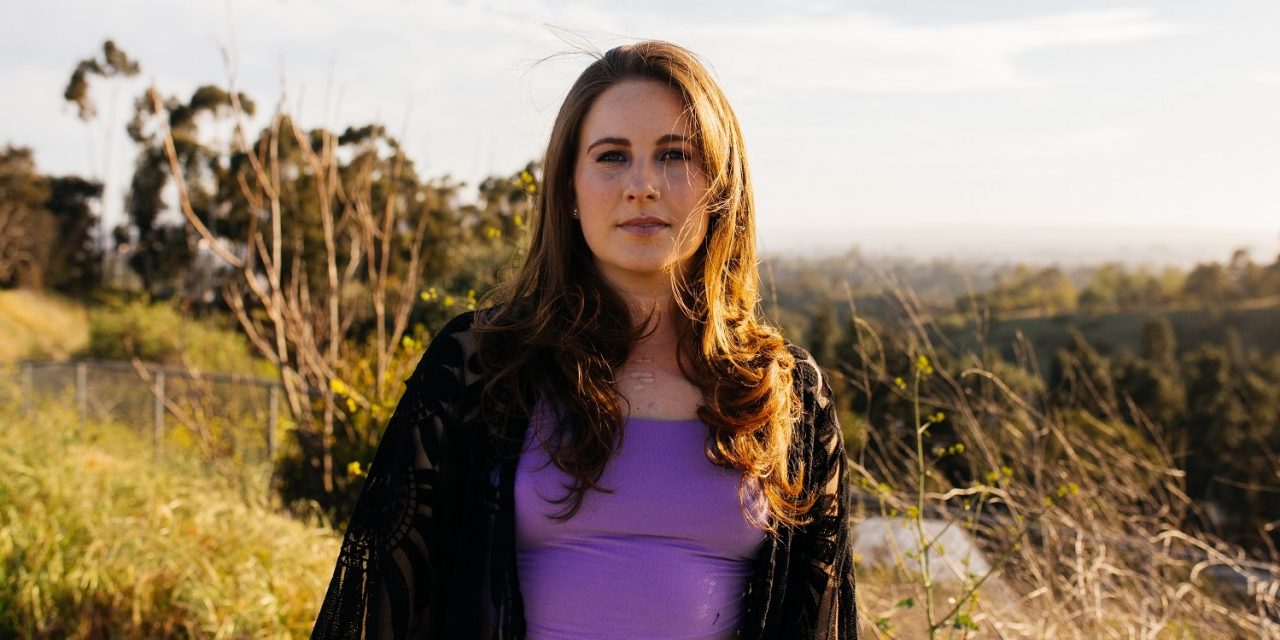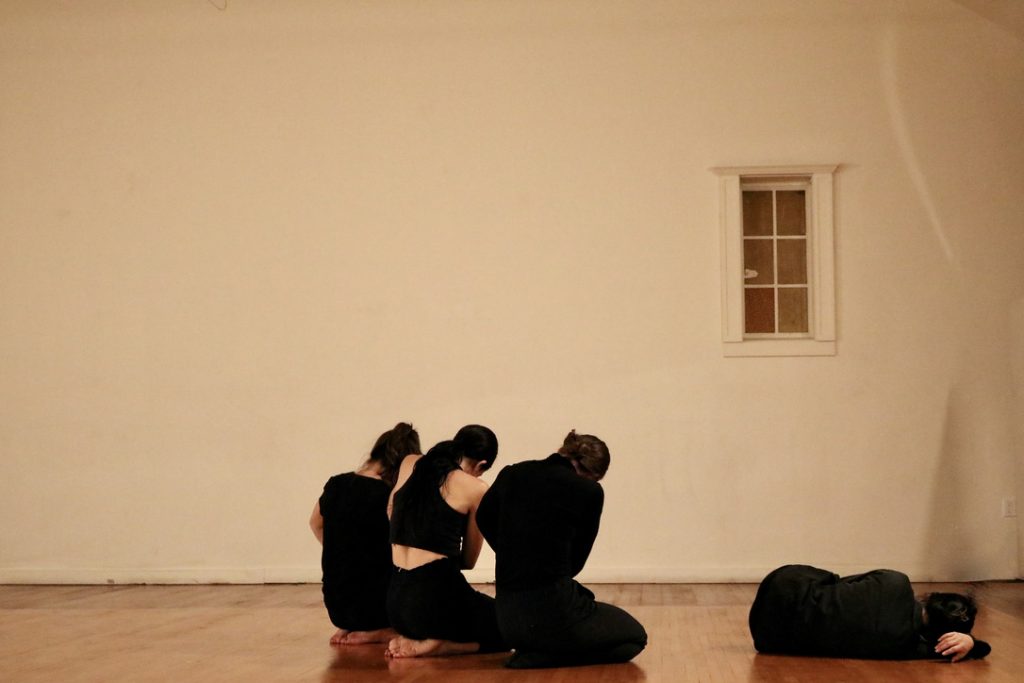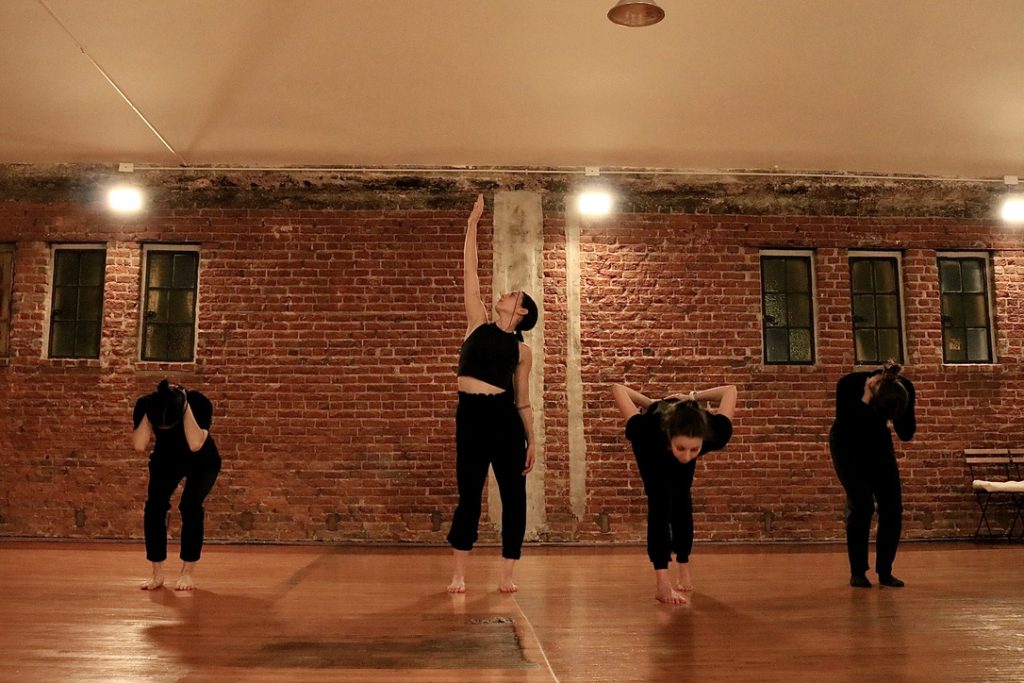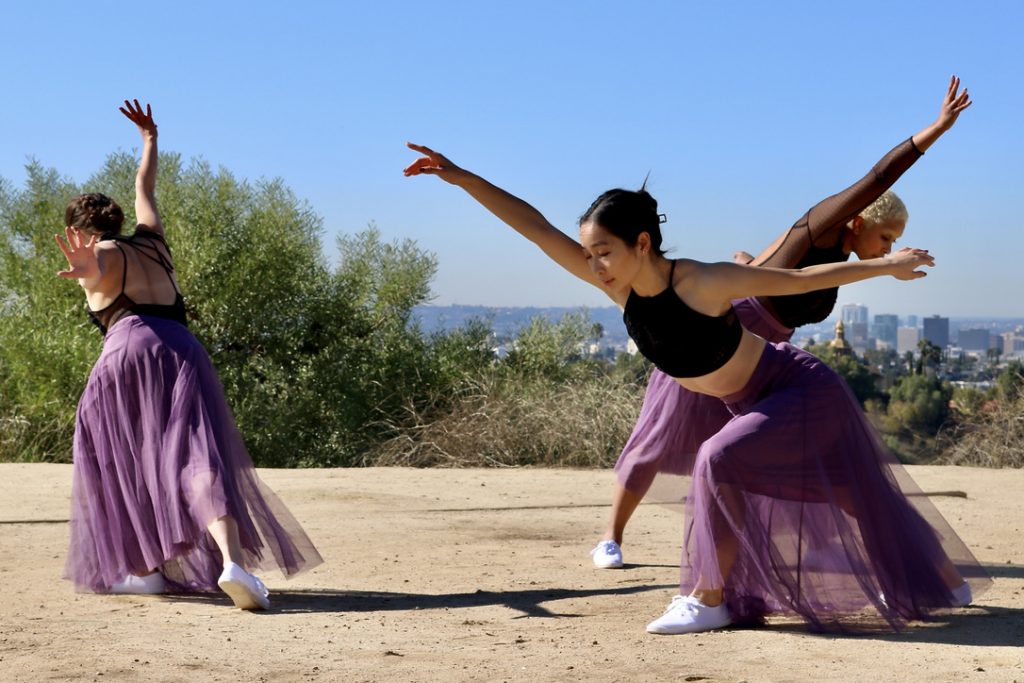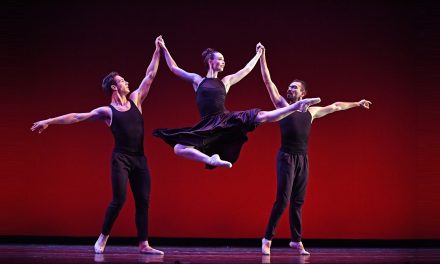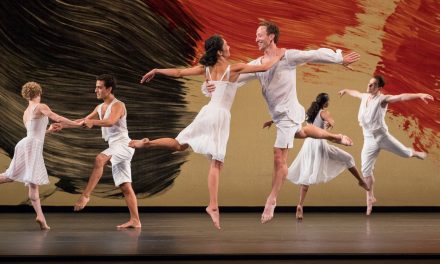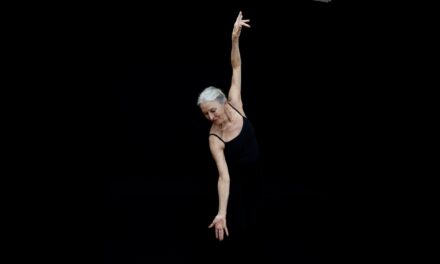Los Angeles based choreographer Leah Zeiger will premiere her evening-length work You Live In My Spine January 20 – 22, 2023 at G-Son Studios. This semi-autobiographical work features six dancers, and three live musicians performing an original score by composer, songwriter and producer Max Berlin. The evening will also include spine-inspired art installations and promises to be “an integrated experience for performers and audience members alike.” Tickets are on sale now.
Zeiger grew up in the Los Angeles area, received her early dance training in Pasadena and a Bachelor of Arts in Dance at Columbia College Chicago. Zeiger created dance works while in Chicago for Awakenings Art, Roosevelt University, and Chicago School of Psychology, and since returning to SoCal, she has been commissioned by the Los Angeles Contemporary Dance Company via their Choreography Lab, Awakenings Art Gallery (Chicago), and the National Hotline for Domestic Violence (Washington DC).
It is, however, Zeiger’s creation of The Sunflower Project, and the Body Memory Method that presently influence her creative inspiration and choreographic process. “You Live In My Spine is the first evening length work I’ve created with the Body Memory Method, my movement philosophy, choreographic and somatic practice. The work is a bit autobiographical in the focus on the spine.” Zeiger explained during the interview. “As you know, as all dancers do, we’re always nursing an injury or place of tension, and for me it’s been my spine. and I’ve been approaching my healing process with my spine through this somatic method -The Body Memory Method.”
Zeiger described how during and after the pandemic she became increasingly interested in how forgiveness affects our memories.
“I began investigating how forgiveness affects our memories and our bodies,” She continued. “That’s where the Body Memory Method began, and a lot of what this piece is exploring are these questions – what do we hold in our bodies? Do we even care about what is in our bodies? ‘We’ like the big ‘we’ in society. Do we bother figuring it out? What is the catalyst for us to finally feel the need to address what
is happening in our own bodies? What happens when we figure that out – when we try to have a connection with our bodies?”
Recently, Zeiger has opened development of this method to the community. She is interested in how one’s personal relationship with their body affects how they exist and react to others in the community. “I wonder about how we’re able to relate to other people and have positive relationships with the people that we care about or the people that we interact with, or strangers, and how that relates to our own personal feelings about our bodies,” she added. “What are communities like when it’s a group of people who are completely unaware of, or in non-dialogue with their body, versus people who are more in tune with their bodies? And I think that’s reflected a lot of what I’ve been feeling this past year, too, as far as finding more community and who I’m surrounding myself with, and where my community feels good and where it feels difficult. I think a lot of us are exploring new relationships with our communities as we’re coming out of so much isolation.”
I asked Zeiger when she began reading “The Body Keeps The Score” by Dr. Bessel van der Kolk.
“That’s a great question, and it’s a great book” she answered. “I think that a lot of people who read that book and who know about his work probably have their therapists to thank, and I also have my therapist to thank. My therapist was very helpful, and she was also a yoga teacher, and a meditation instructor.” Zeiger’s therapist knew that van der Kolk’s book would speak to her specifically when he was writing about the body. “He’s talking about his work with veterans and survivors of childhood sexual abuse. It was his research that ultimately led to our current understanding of PTSD, and he changed the way the VA specifically, and others, treat PTSD.” Because it was a lot of misguided treatment, because they didn’t really understand what PTSD. Basically, his entire thesis is that trauma lives in the body, and that you must address the body when you're addressing trauma,” Zeiger stated.
Speaking on the other areas of research Zeiger turned to as source material for You Live In My Spine (like the work of Dr. Alia Crum and James Clear), she said, “There are so many books written by really smart people about the way our bodies store trauma, memories, and emotion. Right now, I’m reading “My Grandmother’s Hands” by Resmas Menakem, and it’s a really fascinating exploration into the way historical racism is held in white bodies, black bodies, and police bodies” she added.
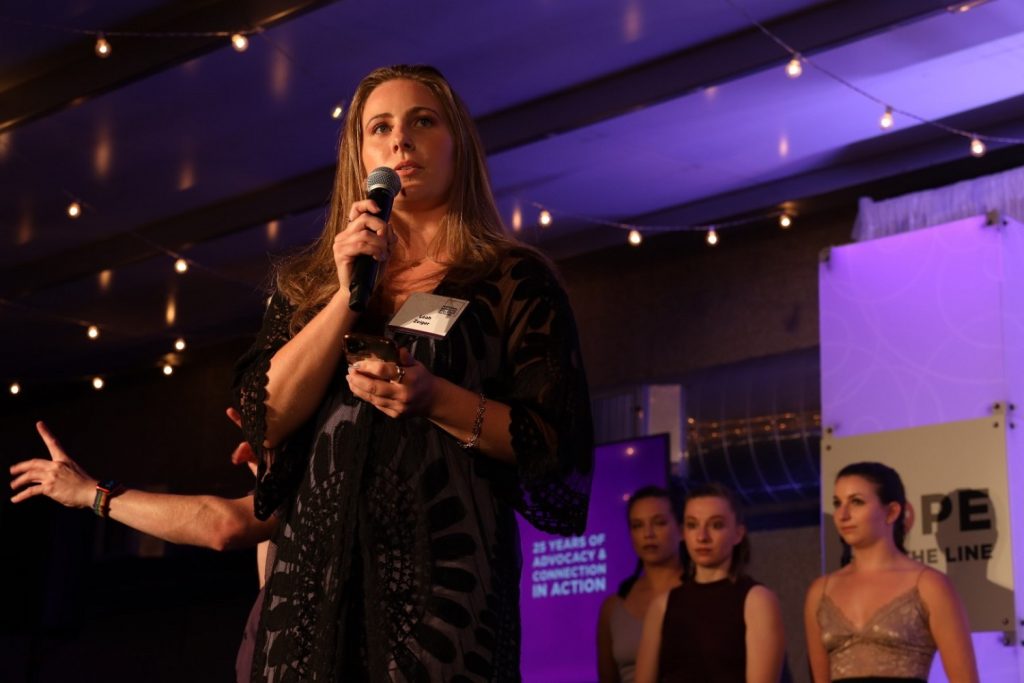
Leah Zeiger speaking to audience before performance performance for the National Hotline for Domestic Violence; courtesy of the Hotline.
Much of Zeiger’s development of the Body Memory Method was a result of being a survivor of an abusive relationship while in high school. She works a lot with survivors of sexual violence, both dancers and non-dancers. “Dancers have a really close relationship with our bodies. But we’re also particularly harsh on our bodies. Not only physically demanding a lot from them, but also emotionally, we can be so judgmental. I’ve noticed that we’re very good at “turning off” sensations when we feel them in order to push through,” she said. “It’s not just our industry, but in the world at large.”
Dancers tend to have a fairly open channel of communication with their bodies in that they are very good at telling them what to do. Zeiger believes that the Body Memory Method can help dancers learn to actually listen to and heed what their bodies are saying back to them and create a more reciprocal and empathetic relationship with their bodies. Zeiger told me that it is a wonderful and inspiring moment when a dancer is truly open to listening to their body and realizes its effects.
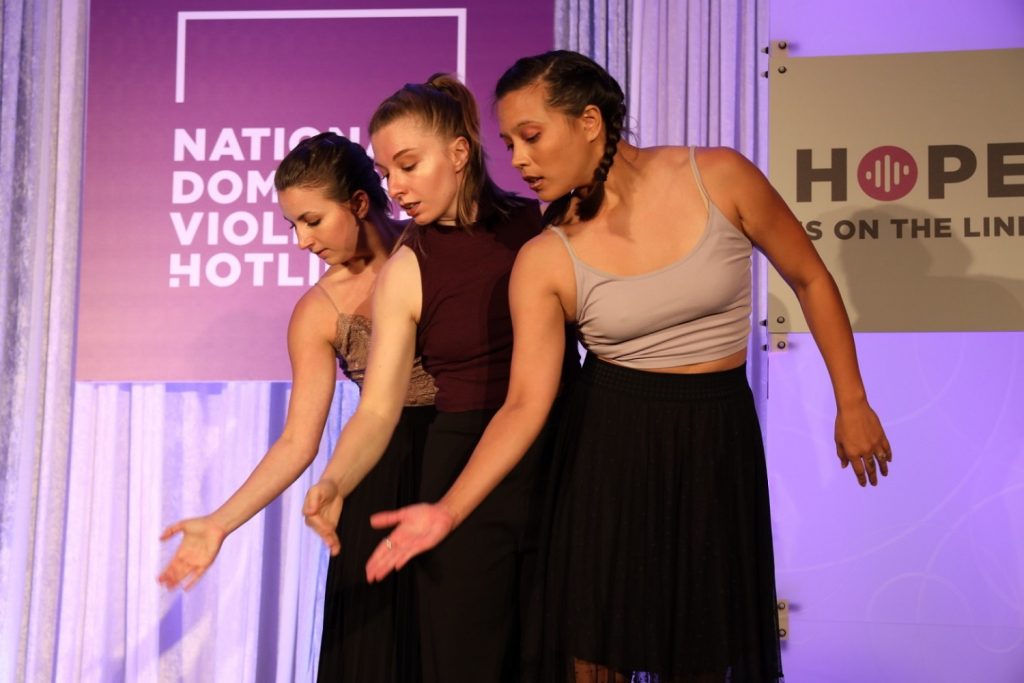
Dancers performing work by Leah Zeiger – Photo courtesy of the National Hotline for Domestic Violence.
She went on to explain the four principles Body Memory Method:
- My body is a knowledgeable being / My body’s knowledge doesn’t just come from my experience – it has its own intellect.
- My body’s number one goal is to survive, and number two goal is to be free of pain / Everything my body does has these two goals in the forefront of intention.
- My body is endlessly and unconditionally forgiving and empathetic / My body doesn’t hold grudges.
- My body is the only thing that allows me (my conscious self) to experience the world / My relationship with my body has a defining impact on how I experience the world.
This theory cannot be explained fully in this one article, but readers can learn more about the Body Memory Method HERE.
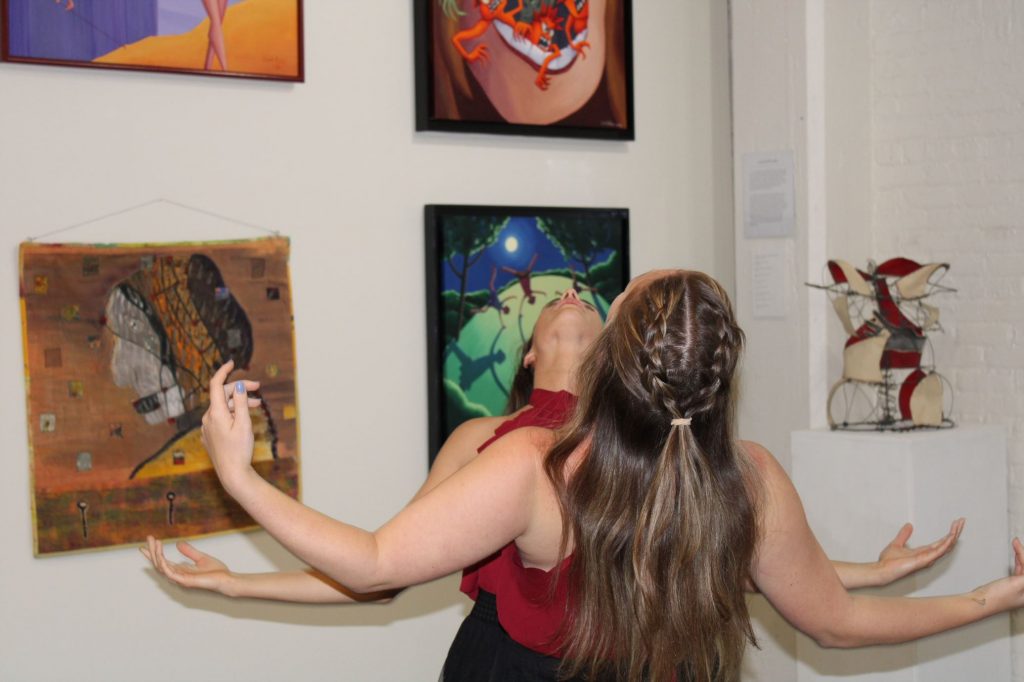
Leah Zeiger (back to camera) and dancer performing at the Awakenings Foundation (reprisal of 2019 work “Once It All Ends”) – Photo courtesy of the artist.
Zeiger noted that each of the six dancers in You Live In My Spine have their own personal relationship to the Body Memory Method, and as each dancer embodies their character they form unique relationships with the other performers based on their relationship to their own bodies.
Additionally, an important piece of Zeiger’s and the dancers’ process has been working with the composer, Max Berlin, as he created an original score. “Max, along with 2 other musicians, a violist (Michael Staffeldt) and a cellist (Sophia Bacelar), will be performing the score live” she said. ““It is hopefully going to be a very engrossing experience for the audience. I think that the concepts in You Live In My Spine – the way in which the bodies hold memory, and how our relationship to that memory affects our lives – exists within musicians and can be physically shown through string instruments. To see the memory that those instruments hold, the memory that those musicians’ bodies hold, how the quality of their relationship with their body and with their instrument affects the music they create… I love that the audience will see this live alongside the dancing.””
Zeiger met Max Berlin in 2021 and worked with him on a trio titled “Bittersweet” that was commissioned by the National Domestic Violence Hotline and was performed in Washington, D.C. for their 25th Anniversary Gala in September of 2022.
“I started talking to Max about You Live In My Spine in February of 2022” Zeiger said. “We were talking a lot about what the piece was about and what body memory is. I have a lot of material that I’ve written about this topic, like personal essays and research. I sent it all to him and together we navigated creating four movements of music that eventually became the score for this piece.”
Berlin attended the audition and several rehearsals, has witnessed Zeiger talking to the dancers, saw sections of the work, and learned how The Body Memory Method drove the process. Berlin often created the sections of music by starting with a motif or riff, then building from there. “He’d create maybe a minute or 2 of melody, or a couple of chords, then we’d discuss which ones I was really drawn to, he would then develop those, and so on. For the most part, though, I let him do his thing, because he’s a truly gifted composer and is able to transform my ramblings about the piece into eloquent, incredible music.”
Berlin’s score changes meter quite often and Zeiger admits that counting the music has been a challenge. “I mean, it’s like we’re in an 8. This is 5. And then 7, and back to 6” she explained, laughing. “It is all over the place which has been fun for someone who’s not very good at counting.”
Because I had not heard of G-Son Studios, originally a sound studio for a hip hop and rap group known as The Beastie Boys (1978-2012), I asked Zeiger how she located this space. She told me Emily Wanserski, whom she met through JUMPSTART/LA, recommended that she contact Sara Silkin, one of the owners of G-Son Studios. After a site visit, Zeiger thought that the space was perfect for her to premiere her new work.
“It’s a good size and feel for what I’m doing with You Live In My Spine, and I really enjoy the close proximity of the audience to the dancers. Depending on where you choose to sit, you’ll get an entirely different perspective of the performance. I hope audience members come away with a new interest in their connection with their bodies, and a reminder that when we truly open ourselves up to the knowledge and memory held in our bodies, we can not only improve our own quality of life but find deeper and more meaningful connections with our community.”
#####
WHAT: You Live In My Spine, Choreography by Leah Zeiger
WHO: Dancers Alexis Amundarain, Sierra Henry, Alyssa Milligan, Alondra Perez, Amanda Sun, and Amina Yufanyi. With Musicians Max Berlin (Composer), Michael Staffeldt (Violist), and Sophia Bacelar (Cellist).
WHEN: January 20 – 22, 2023 – Friday & Saturday (1/20 and 21) at 8pm – Sunday (1/23) at 2pm.
WHERE: G-Son Studios located at 3218 Glendale Blvd, Los Angeles, CA 90039
TICKETS: Suggested donations of $10 to $25. To purchase tickets, please click HERE.
For more information about Leah Zeiger, You Live In My Spine, and the Body Memory Method, please visit her website.
For more information about the G-Son Studios, please visit their website.
Written by Jeff Slayton for LA Dance Chronicle.
Featured image: Leah Zeiger – Photo by Dolly Ave.

